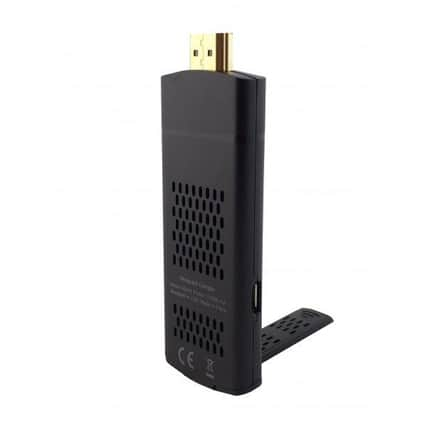How to watch your phone on your big-screen TV


Whether it’s movies, TV, photos or music you’re playing, it’s easier than you think to “cast” your hand-held screen to the much bigger one in the corner of the room.
All the same, the terminology used to describe the various systems is confusing - and the one you choose may depend on the make of device you’re using.
Advertisement
Hide AdAdvertisement
Hide AdA mere £15 will buy you a streaming stick with more or less universal connectivity, though you will need to fiddle a little to get it working.
Google’s £30 Chromecast, on the other hand, is more likely to work straight out of the box, but you’re limited to viewing content and services Google supports.
If you don’t mind rolling your sleeves up, the £15 Measy A2WII is the current best buy for getting your small screen onto your big one. Supporting the Miracast, EZCast and Airplay protocols, it’s compatible with virtually all phones and tablets.
Miracast, which comes built into newer Android devices, is a standard for mirroring the screen of your phone, tablet, or PC to a television, without the use of physical cables. Amazon’s Fire TV stick uses Miracast, as do Roku streaming boxes and a few smart TVs.
Advertisement
Hide AdAdvertisement
Hide AdBut it works only on Android versions 4.2 and above, which generally means devices sold in the last three years. For older phones, there is EZCast, a proprietary system used by Measy and other far-Eastern manufacturers. This requires a dedicated app on the phone and is prone to excessive buffering - but it should be OK for music and standard-definition video.
Airplay, which Measy also supports, is an Apple-specific protocol for throwing multimedia content wirelessly from one device to another. It works wonderfully, and transmits metadata such as album covers and movie cast lists, as well as the media itself. If you have an iPhone or iPod, this is what you will use - and the integration should be seamless.
However, Apple is fond of changing the Airplay specification without warning, so there is no guarantee of future-proofing on the Measy stick or other third-party devices.
The fourth mode supported by Measy is DLNA, not strictly a mirroring system but a means of taking content on one device - your main PC, perhaps - and playing it on another. DLNA doesn’t tie up the source device while the media is playing: so long as it’s switched on, it will work happily away in the background.
Advertisement
Hide AdAdvertisement
Hide AdLike most streaming devices, the Measy stick plugs directly into a spare HDMI socket on the back of your TV. It also requires a mains supply, which it can get from your telly’s USB port, if it has one. That saves a bit of extra cabling.
The Google Chomecast doesn’t use EZCast but the principle is similar: an app on your phone or tablet casts media from a second, compliant, app to the stick. For this reason, there is no remote control - everything is run from phone.
All of these solutions involve wi-fi, rather than wired networking - so whichever you choose, make sure your home network is robust enough to handle the streaming traffic. Visit speedtest.net from a wireless device, and if your download speed is in double figures, you can enjoy - and share - the show.